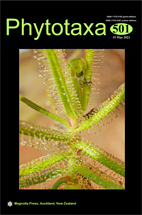Abstract
Does traditional generalist herbarium collecting record grass diversity more effectively than plot-based recording common in ecology? We present a checklist of the Poaceae of Mount Kilimanjaro compiled from two datasets: records from 1646 plots of 0.1ha each made since the 1990s, as well as all the specimens held at K and NHT herbaria. We record a total of 276 species in 90 genera represented by 1510 herbarium collections in both datasets; inclusion of unvouchered observations increases the diversity recorded to 288 species in 94 genera. Seventy four species were recorded only once, either through plots or herbarium collecting. Further unrecorded species are likely to be found. The herbarium and plot datasets proved more different than expected, with only 55% of species recorded by both datasets. The difficulties of grass identification and recognition in the field may have compounded selection biases inherent to both techniques. We urge both general collectors and plant ecologists to broaden their sampling techniques to capture more of the true diversity in ecosystems such as those of Mount Kilimanjaro.

